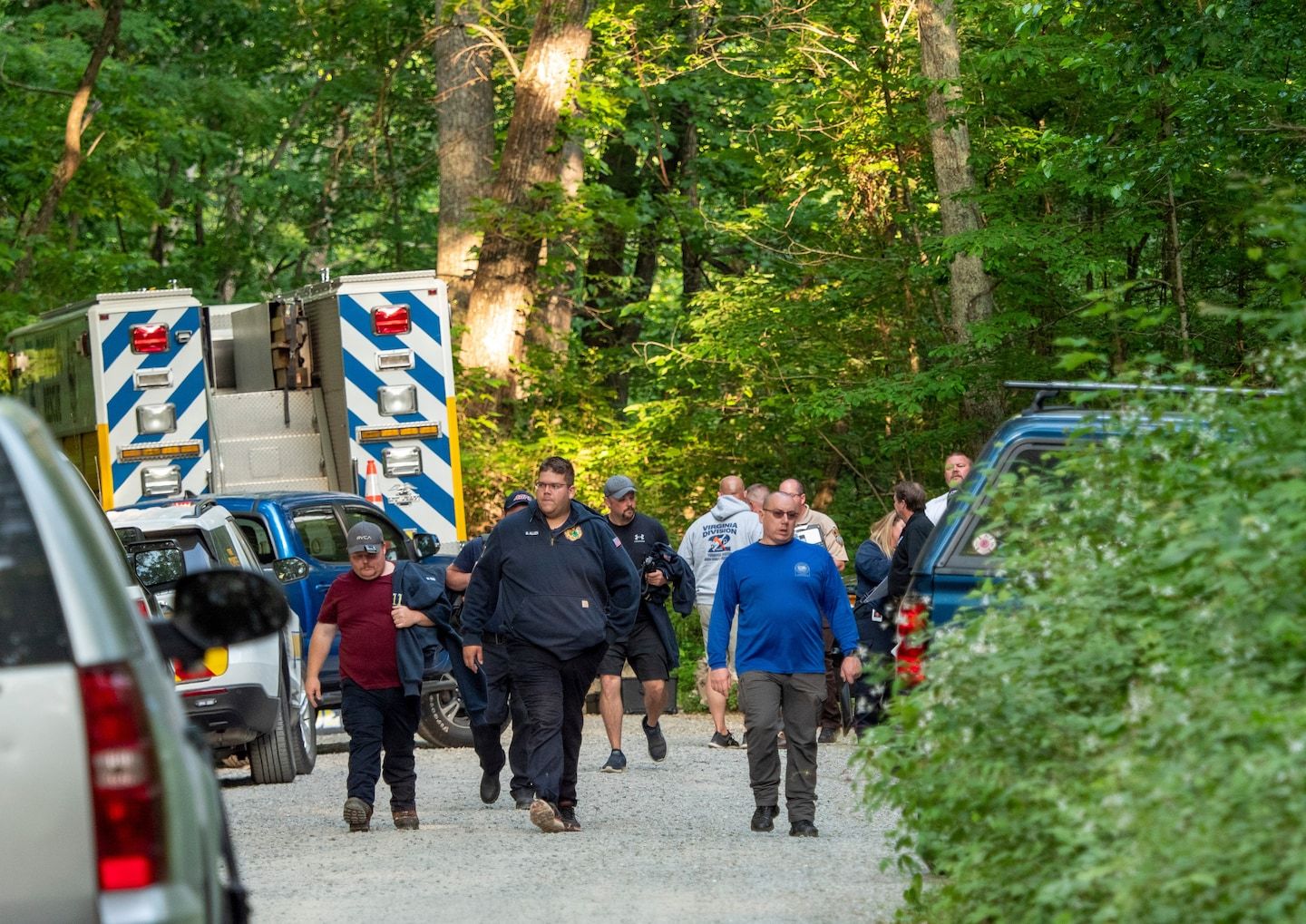NTSB: Pilot of crashed jet linked to sonic boom suddenly went silent
Listen 4 min Comment on this story Comment Gift Article Share
The pilot of a Cessna Citation that was pursued by military jets this month read back a series of instructions from air traffic controllers before suddenly losing contact, according to a preliminary report Wednesday by the National Transportation Safety Board. Fast, informative and written just for locals. Get The 7 DMV newsletter in your inbox every weekday morning. ArrowRight Pilot Jeff Hefner made contact with controllers in Atlanta as the jet climbed, reading back an instruction at 1:25 p.m., according to recordings reviewed by investigators. Three minutes later, a controller tried to direct Hefner to a new altitude and received no response.
The business jet then flew for almost another two hours before crashing in the west-central Virginia mountains. The crash was linked to a boom heard June 4 across the Washington region caused by military jets racing faster than the speed of sound to catch the Citation.
Advertisement
The report represents facts NTSB investigators have gathered in their investigation so far, but adds few new details to what is already publicly known about the crash. A final report that sets out causes of the crash and makes recommendations to improve safety will probably take at least a year to complete.
The plane ultimately plunged into the mountains, and investigators said the wreckage indicates a “high velocity, near vertical descent.” The jet was destroyed, and while it was equipped with a cockpit voice recorder that could shed light on what happened onboard, the device has not been recovered, according to the report.
Four people were onboard the plane. Family members have identified them as Adina Azarian, 49, her daughter Aria, 2, their nanny Evadnie Smith and Hefner, 69.
Hefner had flown the plane from its base at Melbourne International Airport in Florida to Elizabethton, Tenn. the morning of the crash, according to the NTSB report. In Tennessee, it received 300 additional gallons of fuel and picked up the three passengers.
Advertisement
Azarian and her family were heading home to Long Island after a short vacation with her father, John Rumpel, who owned the plane.
The flight departed at 1:13 p.m., according to the report, which said Hefner was in contact with air traffic controllers as he climbed to 34,000 feet. At 1:28 p.m., three minutes after the pilot’s previous communication, a controller unsuccessfully contacted the plane to direct it to a lower altitude because of crossing traffic.
“No further radio transmissions from the pilot were received for the remainder of the flight, despite repeated attempts to contact the pilot,” investigators wrote.
The aircraft continued toward New York at 34,000 feet before approaching its intended destination and heading south.
As the Citation approached Washington, the military scrambled F-16 jets to pursue it. The planes were given rare authorization to fly at supersonic speeds over an urban area, creating the boom. Military pilots were able to look inside the cockpit of the private jet and saw Hefner slumped over.
The plane eventually crashed in remote, mountainous woods near Montebello, Va. Experts have said it appears that the plane lost pressurization — leaving its four occupants unconscious — and was under the control of the autopilot. The jet probably flew until one of its engines ran out of fuel, experts said. The NTSB report released Wednesday doesn’t mention the plane’s pressurization or autopilot mode.
Advertisement
The plane rapidly spiraled toward the ground, according to flight tracking data.
NTSB investigators were confronted with difficult terrain as they began their investigation and had to hike to the crash site. The wreckage was scattered around a main crater and there were signs of a fire after the crash, according to the report.
The plane was manufactured in 1990, and Rumpel purchased it April 17, registering it to a corporation in Florida, Federal Aviation Administration records show.
Hefner was a retired Southwest Airlines captain who continued to hold an airline pilot rating and qualified for a top-level medical certificate in October. Records reviewed by the NTSB indicate he had 34,500 hours of flying time, including 850 hours in the kind of plane involved in the crash.
Azarian was a successful figure in the New York real estate industry, according to friends, who said Smith was like family.
Rocket, a rescue dog, was startled by a loud boom in Fairfax Station, Va., on June 4. The sound was caused by fighter jets scrambling to intercept a plane. (Video: The Washington Post)
Gift this article Gift Article
Source: The Washington Post


